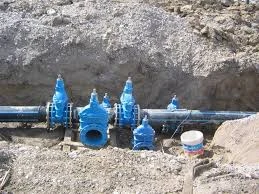Oct . 05, 2024 02:55 Back to list
ppr pipes and fittings
Understanding PPR Pipes and Fittings A Comprehensive Overview
PPR, or Polypropylene Random Copolymer, has become a popular choice in the plumbing and construction industries, particularly for piping systems. Renowned for its durability, resistance to corrosion, and high thermal stability, PPR pipes and fittings are increasingly being utilized in various applications ranging from residential plumbing to industrial installations. This article aims to delve into the characteristics, advantages, applications, and installation methods for PPR pipes and fittings.
Characteristics of PPR Pipes
PPR pipes are made from polypropylene, which is known for its versatility and resistance to harsh conditions. Unlike traditional metal pipes, PPR pipes do not rust or corrode, making them a preferred choice for water transport, drainage systems, and even chemical applications. These pipes are available in different sizes and dimensions, allowing for a wide range of uses in both residential and commercial sectors.
One of the standout features of PPR pipes is their temperature resistance. They can withstand temperatures ranging from -20°C to +95°C, which makes them suitable for hot and cold water supply systems. Additionally, PPR pipes have excellent insulation properties, preventing heat loss in hot water applications, thus enhancing energy efficiency.
Advantages of PPR Pipes and Fittings
1. Durability PPR pipes are incredibly robust and have a long lifespan, often exceeding 50 years with proper installation and use. This longevity translates to reduced maintenance costs and fewer replacements over time.
2. Lightweight Compared to traditional metal pipes, PPR pipes are significantly lighter, making transportation and installation easier. Their lightweight nature allows for less strenuous handling and reduces labor costs.
3. Cost-Effectiveness Although the initial investment for PPR materials may be higher than that of lower-quality alternatives, their durability, low maintenance requirements, and energy-saving properties make them a cost-effective solution in the long run.
ppr pipes and fittings

4. Non-Toxic PPR pipes are certified safe for potable water, meaning they do not leach harmful substances into water supplies. This is a critical factor for residential and commercial applications, ensuring that users are protected from contaminants.
5. Ease of Installation The installation of PPR pipes typically requires fewer fittings and joints, which minimizes potential leak points. PPR pipe fittings are usually connected via welding, which forms a strong bond that enhances the overall integrity of the system.
Applications of PPR Pipes
Due to their unique properties, PPR pipes and fittings are used in various applications
- Residential Plumbing They are ideal for hot and cold water supply systems in homes, ensuring clean and safe water delivery. - Heating Systems PPR pipes are effective in underfloor heating installations and radiator connections due to their high-temperature resistance. - Industrial Uses Many industries, including food processing, pharmaceuticals, and chemicals, utilize PPR pipes for their non-reactive nature and resistance to various substances. - Irrigation Systems In agriculture, PPR pipes are commonly employed for efficient water distribution in irrigation systems.
Installation Techniques
Installing PPR pipes requires specific techniques to ensure a secure and leak-proof setup. The most common method is socket fusion welding, where the pipe ends are heated and then fused together to create a seamless joint. The welding process requires careful attention, as ideal temperatures and timing are crucial for creating strong joints. Additionally, professionals often utilize specialized equipment to ensure consistent results.
In conclusion, PPR pipes and fittings combine durability, cost-effectiveness, and versatility, making them an excellent choice for various plumbing and industrial applications. As technology advances and the demand for sustainable and efficient materials grows, PPR will likely continue to gain prominence in both new construction and renovation projects. Whether for residential use or industrial implementation, PPR pipes represent a modern solution to traditional piping challenges.
-
Durable PP Rigid Sheet: Versatile & High-Quality Plastic Panels
NewsAug.08,2025
-
Premium Glossy PP Rigid Sheet – Durable & Versatile
NewsAug.07,2025
-
High-Quality HDPE Sheet | Durable Plastic Panels
NewsAug.06,2025
-
High-Precision PVC Rigid Sheets for Vacuum Forming | AI-Optimized
NewsAug.05,2025
-
Durable PVC-M Water Supply Pipes | 60-Year Life
NewsAug.04,2025
-
Premium HDPE Water Supply Pipes: Durable & Leak-Proof
NewsAug.03,2025

